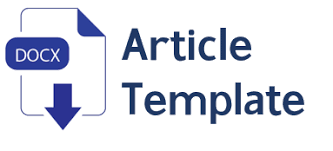The Implementation of Collaborative Writing Technique to Improve Students’ Writing Performance and Soft Skill
DOI:
https://doi.org/10.29408/veles.v5i2.3614Keywords:
Collaborative Writing, Writing Performance, Soft SkillsAbstract
The purpose of this study was to look into the use of collaborative writing techniques to help higher secondary students enhance their writing skills and soft skills. This was done based on the findings of earlier studies that showed the effectiveness of collaborative writing techniques in increasing students' writing abilities and soft skills development. Students in Grade 10 at Sekolah Tunas Bangsa Kubu Raya participated in the study, which used a mixed-methods research methodology. For qualitative data, an observation checklist and field note was used, while for quantitative data, a questionnaire and writing tasks were used. The researchers discovered that collaborative writing was effective in improving students' writing proficiency and soft skills after they evaluated and calculated the data. (1) improvements in writing task mean scores from 78.67 in Meeting 1 to 87.13 in Meeting 3; (2) students' responses on a questionnaire about their writing ability and soft skills reached 92 percent in elaborating ideas and 93 percent in gaining self-esteem and confidence; (3) improvements in observation checklists that were performed excellently (scale 4) by the observers on the third meeting; and (4) the note taker's complimentary comments on the field notes about the pupils' writing abilities and soft skills As a result of this data, it is suggested that collaborative writing techniques be used with higher secondary students to improve both writing performance and soft skills.
References
Creswell, J. W. (2014). Research design qualitative, quantitative, and mixed methods approaches (4th ed.). SAGE Publications, Inc.
Creswell, J. W., & Plano-Clark, V. . (2007). An introduction to mixed-method research. In Sage Publication. SAGE Publications, Inc.
Deveci, T. (2018). Student perceptions on collaborative writing in a project-based course. Universal Journal of Educational Research, 6(4), 721–732. https://doi.org/10.13189/ujer.2018.060415
Farida, A. I. (2017). Improving Students’ Writing Skills Through Outdoor Activity (A Classroom Action Research for the First Grade Students of SMA N 01 Suruh in Academic Year of 2016/2017). In Thesis, State Institute for Islamic Studies (IAIN) Salatiga. State Institute for Islamic Studies Salatiga.
Fong, L. S. (2012). Benefits of Collaborative Writing for ESL Advanced Diploma Students in the Production of Reports. 4(4), 396–407.
Fung, Y. M. (2010). Collaborative writing features. RELC Journal, 41(1), 18–30. https://doi.org/10.1177/0033688210362610
Hammond, J. A., Bithell, C. P., Jones, L., & Bidgood, P. (2010). A first year experience of student-directed peer-assisted learning. Active Learning in Higher Education, 11(3), 201–212. https://doi.org/10.1177/1469787410379683
Hillyard, C., Gillespie, D., & Littig, P. (2010). University students’ attitudes about learning in small groups after frequent participation. Active Learning in Higher Education, 11(1), 9–20. https://doi.org/10.1177/1469787409355867
Isgiarno, Y. C., Cahyono, B. Y., & Rahmaningtyas, H. (2020). Increasing EFL Students’ Writing Skill Using Jigsaw and Online Searching Strategy. IJEE (Indonesian Journal of English Education), 7(1), 97–110. https://doi.org/10.15408/ijee.v7i1.16383
Kartawijaya, S. (2018). Improving Students’ Writing Skill in Writing Paragraph through an Outline Technique. Curricula, 3(3), 152–158. https://doi.org/10.22216/jcc.2018.v3i3.3429
Laal, M., & Laal, M. (2012). Collaborative learning: What is it? Procedia - Social and Behavioral Sciences, 31(December 2012), 491–495. https://doi.org/10.1016/j.sbspro.2011.12.092
Rahayu, E. S. (2016). Using Google Docs on collaborative writing technique for teaching English to non English department students. Proceedings of ISELT FBS Universitas Negeri Padang, 4(1), 226–236. http://ejournal.unp.ac.id/index.php/selt/article/view/6932/5466
Ranabumi, R., Rohmadi, M., & Subiyantoro, S. (2017). Improving Students’ Writing Short Story Skill through Time Token Learning and Video Media. Journal of Education and Learning (EduLearn), 11(4), 439–445. https://doi.org/10.11591/edulearn.v11i4.6808
Rezeki, Y. S. (2017). Collaborative Written Feedback Experience: A Case Study of Indonesian EFL Students in an Essay Writing Class. International Journal of Educational Best Practices, 1(2), 24. https://doi.org/10.31258/ijebp.v1n2.p24-37
Septiani, P. (2018). Improving students’ writing skill by using four square writing technique (a collaborative classroom action research). State Islamic University of Raden Intan Lampung.
Sormunen, E., Tanni, M., & Heinström, J. (2013). Students’ engagement in collaborative knowledge construction in group assignments for information literacy. Information Research, 18(3), 1–16.
Wati, N. S. (2013). The effectiveness of collaborative writing method to teach writing skill viewed from students’ creativity. Sebelas Maret University.
Yulianti, S., Nuraeni, S., & Parmawati, A. (2019). Improving Students’ Writing Skill Using Brainswriting Strategy. PROJECT (Professional Journal of English Education), 2(5), 714. https://doi.org/10.22460/project.v2i5.p714-721
Zhang, M. (2018). Collaborative writing in the EFL classroom: The effects of L1 and L2 use. System, 76(4), 1–12. https://doi.org/10.1016/j.system.2018.04.009
Downloads
Additional Files
Published
How to Cite
Issue
Section
License
Authors who publish with VELES agree to the following terms:
- Authors retain copyright and grant the journal the right of first publication with the work simultaneously licensed under Creative Commons Attribution-ShareAlike 4.0 International License (CC BY-SA 4.0).
- Authors can enter into separate, additional contractual arrangements for the distribution of the journal's published version of the work (e.g., posting it to an institutional repository or publishing it in a book), with an acknowledgment of its initial publication in this journal.
- Authors are permitted and encouraged to post their work online (e.g., in institutional repositories or on their website) before and during the submission process, as this can lead to productive exchanges and earlier and greater citations of published work.
VELES is licensed under a Creative Commons Attribution-ShareAlike 4.0 International License.





